Polyferric sulfate (PFS) is a high-molecular-weight, pre-polymerized inorganic coagulant characterized by its superior performance, light yellow amorphous powder form, and excellent coagulation ability in a wide pH range. PFS is known for its high charge density and ability to form large flocs, which effectively remove impurities from water.Widely used in drinking water, municipal and industrial wastewater treatment, and sludge dewatering, PFS offers advantages over conventional ferric sulfate (FS) and ferrous sulfate (FeSO₄) through enhanced charge neutralization, enmeshment mechanisms, and lower corrosivity. This article provides a detailed overview of PFS’s properties, mechanisms, applications, and a focused comparison with ferric and ferrous sulfate to guide procurement and application in water treatment industries.
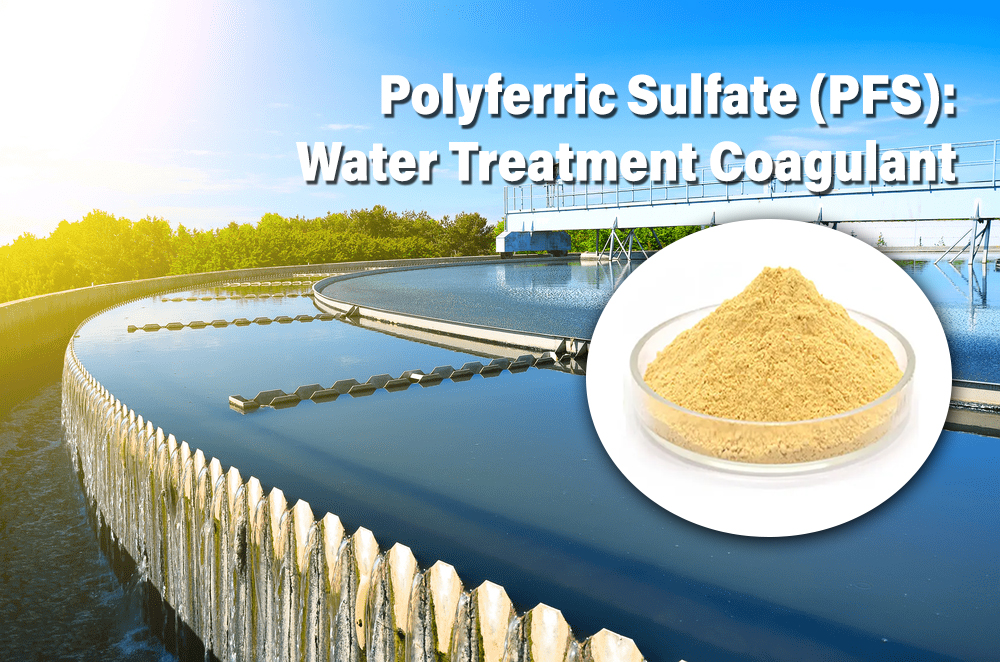
1. Introduction
Polyferric sulfate (PFS) is an inorganic polymer coagulant developed to improve upon traditional iron salts in water purification processes. It is typically produced by controlled hydrolysis and polymerization of ferric salts in the presence of sulfuric acid, yielding a pre-hydrolyzed, high-charge coagulant that is easy to handle and store.
2. Physical and Chemical Properties
1.Appearance and Solubility
PFS appears as a light yellow to dark brown amorphous powder with high water solubility; a 10 % (w/w) aqueous solution is red-brown, transparent, and hygroscopic.
2.Molecular Structure
Chemically, PFS can be represented by the general formula [Fe₂(OH)ₙ(SO₄)₃₋ₙ/₂]ₘ, where n < 2 and m > 10, indicating long-chain polymeric iron hydroxyl-sulfate species with both hydroxyl and sulfate functional groups.
3.Charge and pH Dependence
PFS carries a high cationic charge, which remains effective across a broad pH range (optimal coagulation between pH 5–7), allowing it to destabilize a variety of suspended particles and colloids.

Key Properties of PFS
• High Coagulation Efficiency: PFS exhibits strong coagulating ability, effectively removing turbidity, color, and organic matter from water.
• Broad pH Range: It functions effectively across a wide pH range (4–11), with optimal performance between pH 6 and 9.
• Rapid Settling: The flocs formed by PFS settle quickly, enhancing the efficiency of sedimentation processes.
• Low Sludge Production: Compared to traditional coagulants, PFS generates less sludge, reducing disposal costs.
• Stable Storage: PFS solutions are stable and have a long shelf life, facilitating storage and transportation.
3. Mechanism of Coagulation
PFS destabilizes impurities primarily through charge neutralization and enmeshment. During coagulation:
1.Charge Neutralization: Polycations from PFS neutralize negatively charged colloids, reducing electrostatic repulsion.
2.Enmeshment (Sweep Flocculation): Precipitated iron hydroxide nets trap suspended solids, leading to larger, faster-settling flocs.
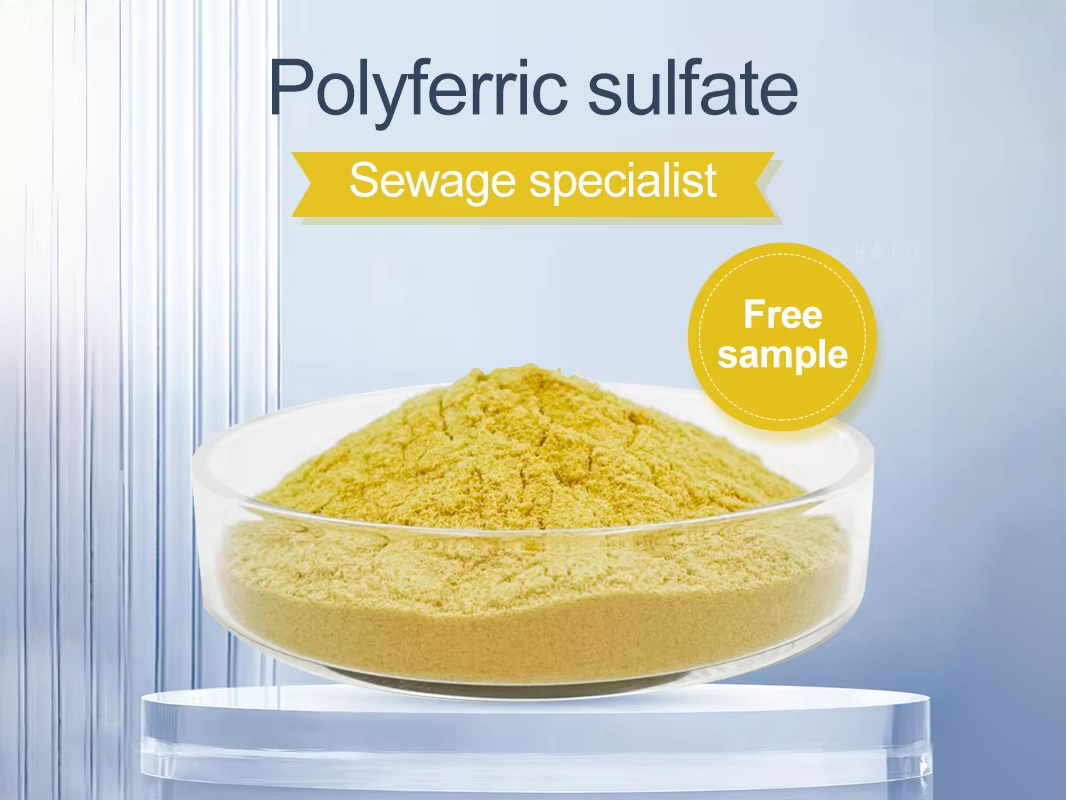
4. Applications of Polyferric Sulfate
1. Municipal Water Treatment
PFS is extensively used in municipal water treatment plants to purify drinking water. It effectively removes suspended solids, organic matter, and pathogens, ensuring safe and clean water supply.
2. Industrial Wastewater Treatment
Industries such as textiles, chemicals, and mining utilize PFS to treat wastewater containing heavy metals, dyes, and other pollutants. Its strong coagulating properties facilitate the removal of contaminants, aiding in compliance with environmental regulations.
3. Urban Sewage Treatment
In urban sewage treatment, PFS helps in reducing chemical oxygen demand (COD), biological oxygen demand (BOD), and suspended solids (SS), improving the quality of effluent discharged into the environment .
4. Sludge Dewatering
PFS enhances sludge dewatering processes by forming dense flocs that release water more efficiently, leading to reduced sludge volume and lower disposal costs .
5. Other Applications
PFS is also used in the pulp and paper industry for process water treatment, in mining operations for effluent treatment, and in swimming pools to maintain water clarity.
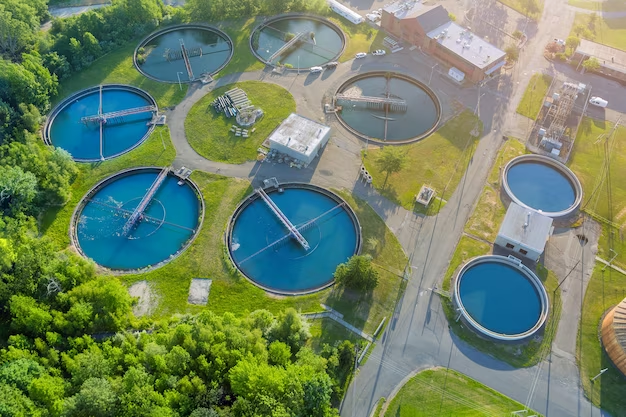
5. Comparing PFS with Ferric Sulfate and Ferrous Sulfate
| Property | Polyferric Sulfate (PFS) | Ferric Sulfate (Fe₂(SO₄)₃) | Ferrous Sulfate (FeSO₄) |
|---|---|---|---|
| Oxidation State | Fe³⁺ | Fe³⁺ | Fe²⁺ |
| Polymerization | Pre-polymerized | Monomeric | Monomeric |
| Coagulation Efficiency | High | Moderate | Low |
| pH Range | 4–11 | 4–6 | 5–7 |
| Sludge Production | Low | High | High |
| Corrosivity | Low | High | High |
| Storage Stability | High | Moderate | Low |
| Cost-Effectiveness | High | Moderate | Low |
1.Molecular Weight and Polymerization
• PFS: High-molecular-weight polymer; hydrolyzes to long-chain colloids with strong adsorption and net-trapping effects.
• Ferric Sulfate (FS): Low-molecular-weight inorganic salt; forms small monomeric colloids with weaker adsorption capacity.
• Ferrous Sulfate (FeSO₄): Divalent iron salt; not pre-hydrolyzed and relies on in-situ oxidation to Fe(III) for coagulation.
2.Coagulation Efficiency
• PFS generally requires lower dosages than FS for equivalent turbidity removal due to its higher charge density, although optimal dosages for both can be similar under controlled conditions.
• FeSO₄ is less effective until oxidized to Fe(III), making it less suitable for direct coagulation applications.
3.Corrosivity and Handling
• PFS is less corrosive than FS and FeSO₄ due to its polymeric nature, reducing equipment wear and maintenance costs.
• FS and FeSO₄ are more corrosive, requiring acid-resistant materials and stricter handling protocols.
4. Cost Considerations
• While FS and FeSO₄ often have lower unit costs, their lower efficiency and higher maintenance needs can result in higher overall treatment costs compared to PFS.
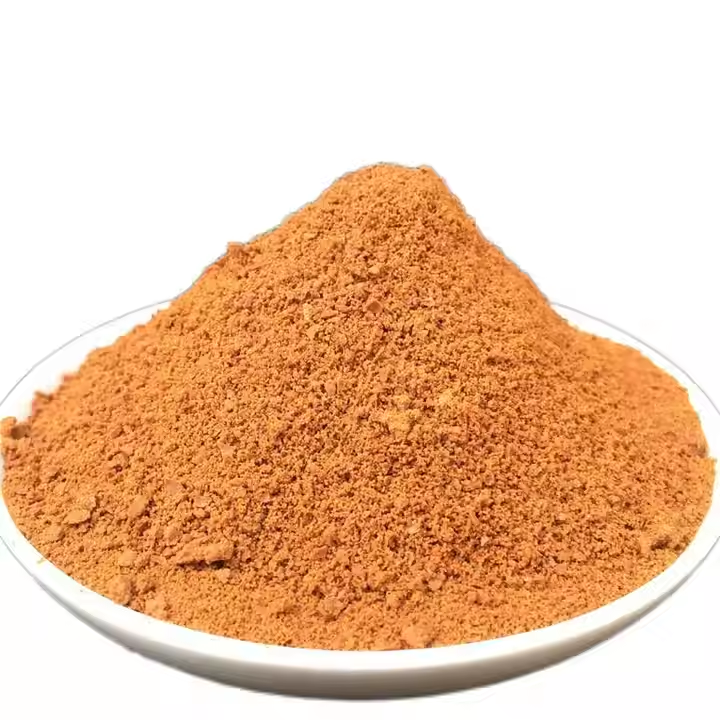
6. Environmental and Regulatory Considerations
PFS is recognized for its environmental friendliness. It produces less sludge, reducing the environmental impact associated with sludge disposal. Additionally, PFS complies with various water treatment standards, including ANSI/NSF Standard 60 for drinking water treatment chemicals.
7. Market Trends and Outlook
The global demand for PFS is on the rise, driven by increasing awareness of water pollution and the need for effective water treatment solutions. Stricter environmental regulations and the push for sustainable practices are further propelling the adoption of PFS across various sectors .
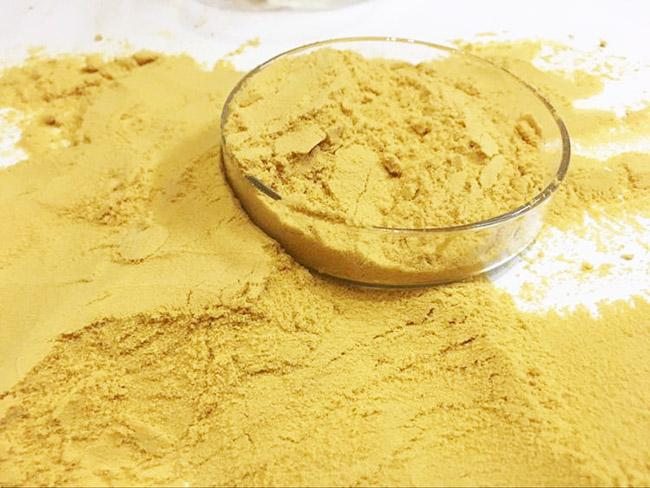
Conclusion
Polyferric sulfate stands out as a highly effective and environmentally friendly coagulant for water and wastewater treatment. Its superior performance, cost-effectiveness, and compliance with regulatory standards make it an ideal choice for industries and municipalities aiming to improve water quality and meet environmental obligations.
You can place an order or ask any questions, please feel free to contact at feronia@wit-stone.com | +86-15655559799
Post time: May-14-2025